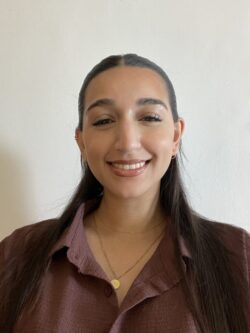Neurofibromatosis Type 1
May is Neurofibromatosis Awareness Month! M4RD have teamed up with the Childhood Tumour Trust (CTT) to raise awareness of this not-so-rare disease.
You may have seen that we’ve been promoting an amazing opportunity for a junior doctor to join the CTT’s Medical Advisory Board and attend The NF Conference in San Francisco! Closer to home we are also spreading the news of the CTT’s Neurofibromatosis CPD module. This free-to-access, online module is a great way to revise what you need to know about NF1. Unlike so many e-learning modules, it’s short and to the point. In the following article, Dr Sri Rambhatla reports what he learned from the CPD module which was created in partnership with Health Professional Academy with video produced by Health Sketch.
Srinivasa Rambhatla is an academic foundation doctor working at the Royal Sussex County Hospital, and is an M4RD ambassador.
The most common of the Neurofibromatoses, Neurofibromatosis Type 1 (NF1) is a condition that leads to tumors growing on nerves alongside effects on other organs. It affects approximately 1 in 2700 births, and can be due to autosomal dominant inheritance from the parents or new mutations in the gene NF1 in the affected child.
Criteria to diagnose NF-1
- Cafe au lait patches – flat, light brown patches on the skin (6 or more should be referred to paediatrician)
- Freckles in unusual places such as the arm-pit or the groin
- Lumps or bumps on/under the skin
- Smaller lumps are called cutaneous neurofibromas and can be many, generally harmless
- Larger lumps are called plexiform neurofibromas are fewer, and are generally more harmful
Complications of NF-1
NF-1 can lead to very mild symptoms, but may also cause serious complications
- Learning difficulties/ADHD leading to requiring extra support at school
- Bone/Joint problems such as hyper mobility, fractures
- Visual problems
- Hypertension
- Epilepsy and other nervous system conditions
- Disfigurement and the resulting psychological effects
- Some cancers such as Breast and Brain cancer may also be more prevalent
Management of NF-1
With regular follow up by a multi-disciplinary team including paediatricians, ophthalmologists, neurologists, dermatologists, psychologists. people with NF-1 can lead fulfilling lives. Whilst currently there is no cure for NF1, charities and organisations such as the Childhood Tumor Trust ensure that there is ongoing research into a cure.
Case studies
Upon reading both Nicole and Marnie’s stories, I was struck by how NF1 can have such wide-ranging effects on people’s lives, from physical to psychological. It also shows how the work of healthcare professionals and advocates such as charities can improve the quality of life of those with NF1, and empower them to lead fulfilling lives.
References
- NHS (2015) Neurofibromatosis Type one, accessed online 08.05.2019 https://www.nhs.uk/conditions/neurofibromatosis-type-1/
- Lissauer T, Clayden G. Illustrated textbook of paediatrics. 5 th Edition. Elsevier. 2017
- Ferner R., Huson S., Thomas N., Moss C., Willshaw H., Evans G., Upadhyaya M., Towers R., Gleeson M., Steiger C. & Kirby A. (2007) Guidelines for the diagnosis and management of individuals with neurofibromatosis 1. Journal of Medical Genetics 44, 81–88. 10.1136/jmg.2006.045906
Understanding Neurofibromatosis Type 1. Childhood Tumour Trust. Accessed online 08/05/2019 https://www.childhoodtumourtrust.org.uk/what-is-neurofibromatosis/




